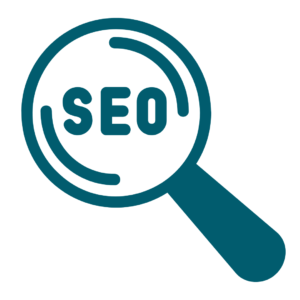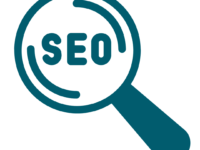The Importance of SEO
SEO is a crucial part of any online marketing strategy. It helps businesses attract more organic traffic from search engines and convert those visitors into qualified leads. It’s also a great way to boost brand awareness.
Search Engine Land covers SEO news and trends. Its articles are written by an editorial team and feature contributions from subject matter experts. For more information, you visit Rank Boss to proceed.

Keywords are a critical part of SEO, as a bridge between what users are searching for and the content websites provide to fulfill those search queries. The importance of keywords must be balanced, and knowing how to select the right ones for your business is vital. In addition to determining search engine rankings, keywords help you target the visitors that best suit your business model. For example, if you sell golf equipment and accessories, it’s important to rank for “new clubs” rather than “best coffee shop in Seattle.”
In the past, search engines relied on keywords to identify the topics that a piece of content covered. This led to practices like keyword stuffing, which displayed irrelevant content to users. However, over time, search engines have become better able to understand what people are searching for and deliver results that best match their intent.
This shift has changed how keywords are used, with relevance now being more important than keyword density. Search engines can now analyze a text to determine whether it matches the user’s intent. This means it’s more important than ever to create quality content that answers users’ questions and provides them with the information they seek.
Choosing the right SEO keywords is an art and requires extensive research. The best keywords are relevant to your product or service and have a high search volume and low competition rating. Using these keywords will allow you to attract targeted traffic and convert them into customers.
When selecting keywords, there are two types: head and long-tail. Head keywords are composed of one or two words with high search volume. Long-tail keywords are more specific and describe the products or services you offer. Ahrefs, a popular keyword research tool, recommends using long-tail keywords to target the most appropriate searches for your business.
In addition, you should also consider branded and unbranded search terms. Branded search terms contain your brand name in the search query. This includes misspellings, branded acronyms, campaign names or taglines, parent companies, etc. Unbranded search terms, however, do not have a brand name and describe a customer problem or need.
On-page optimization is optimizing your website’s content to improve its search engine rankings. It includes keyword optimization, content development, and website structure. Unlike off-page SEO, on-page optimization is something you have control over. On the other hand, off-page SEO involves link building and social media mentions, which you have less control over.
Your page must be highly relevant to the search query to rank well on Google. Optimizing your page content, on-page elements, and navigation is important. You can do this by examining your competitors and using tools like Semrush’s On-Page SEO Checker to analyze your site’s quality and find new optimization opportunities.
Title tags and meta descriptions are the most important on-page SEO factors. They’re the first thing that search engines see when they display a search result, and they’re critical to determining whether or not someone clicks on a particular page. By optimizing your title and meta description, you can ensure that they match your target audience’s search intent.
Other on-page SEO factors include internal linking and image alt text. These can help crawlers better navigate your website and increase the relevance of your keywords. However, these are less important than other on-page SEO factors, such as keyword density and the overall quality of your content.
Another important aspect of on-page SEO is the use of headings and subheadings. This is because they allow users to skim your content and find the information they want. Adding a CTA in your headers can also encourage people to click on your result and help you get more traffic.
Although some marketers may argue that on-page SEO is dead, it’s still crucial to a successful content marketing strategy. By optimizing your pages, you can ensure that they’re highly relevant to search queries and offer a unique experience for your visitors. This will help you increase your site’s ranking and boost your bottom line. Just be careful not to overdo it with keywords, as this could backfire.
Aside from the on-page optimization of your website, off-page SEO is a huge factor in search engine rankings. Moz estimates that off-page SEO factors account for up to 50% of the overall ranking score. Off-page SEO refers to activities outside your control that affect your site’s visibility, such as contacting third-party bloggers and asking them to link to your content. This can significantly improve your rankings and traffic.
Off-page optimization can be done in some ways, but the most important is link building. Backlinks are one of the most important off-page factors, as Google considers them to be a vote of confidence from an independent source. This gives the page or site more authority and trustworthiness and helps it rank higher in searches. However, it’s not just about quantity – the quality of the links is also important. For example, buying links or submitting them to directories is not a good idea, as this is considered a black hat and can get you penalized by Google.
The other major off-page SEO technique is content marketing. By putting relevant, interesting, and engaging content on your site, you can build your link authority and encourage others to link to it. This will help you rank in search engines and give you a platform to reach new audiences.
In addition to these strategies, ensuring your site is easy to navigate and mobile-friendly is also a good idea. Google considers these when assessing your website’s quality.
Finally, off-page SEO includes social media activities and brand mentions on other websites. These factors tell Google how trustworthy and authoritative your site is. They can also increase your brand awareness and visibility. These aspects of off-page optimization are important because they can drive more traffic to your site and improve your bottom line. However, it’s important to note that these activities should complement your on-page SEO efforts rather than replace them. Otherwise, you could end up with a website optimized for search engines that isn’t useful for users.
Link building is one of the most important aspects of SEO, and it involves generating links from other websites to your website. This helps to improve your ranking in search engine results pages (SERPs) and drives traffic to your site. There are many different types of link-building techniques, and they can be used to help you achieve your SEO goals. However, be careful not to use spammy or illegal tactics, which can lead to Google penalties. Instead, focus on earning natural links through quality content and other activities that promote your brand.
Link building can be time-consuming but crucial for long-term SEO success. Various tools are available to help you automate the process and save time. Many of these tools will also provide detailed reports to show you what is working and what is not. These tools will give you the information you need to make informed decisions about your link-building strategy.
Besides improving your SERP ranking, link-building can also be a great way to build relationships in your industry. This is because it involves reaching out to other website owners and pitching ideas. This can lead to new opportunities for your business. For example, if someone sees your article on an authoritative site and thinks it would be valuable to their audience, they may share it with their readers.
In addition to increasing your website’s visibility in search engines, a strong link-building strategy can drive more organic traffic. It does this by increasing your website’s reach and boosting the number of clicks. However, it is important to note that this type of traffic only sometimes translates into conversions.
There are many ways to build links, including broken link building, image link building, HARO, and journalist requests. However, it is essential to remember that link-building is only one part of a larger marketing strategy. The best approach is to create a comprehensive system with technical SEO foundations, on-page optimization, and excellent content.



